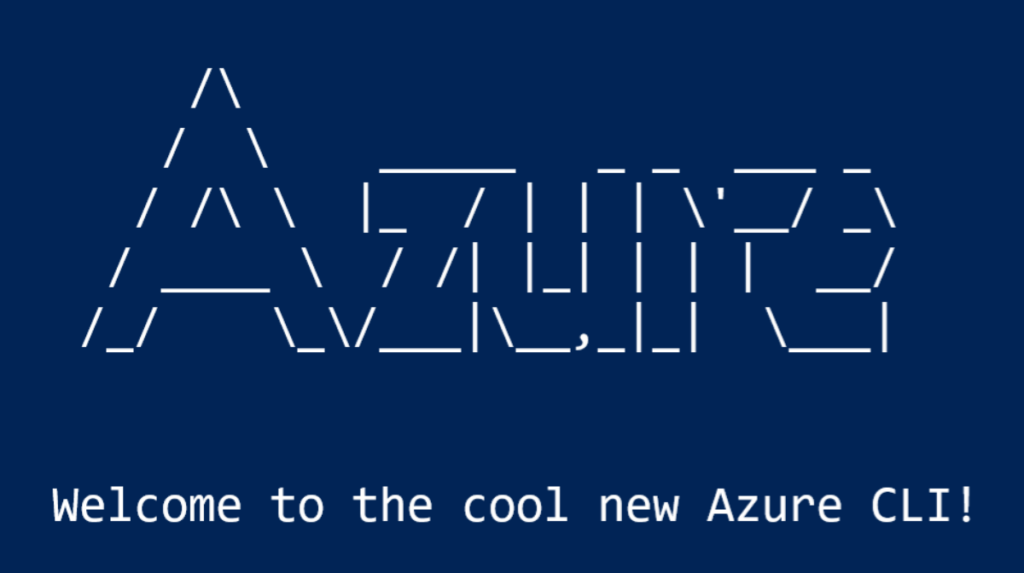Why you should be using the Azure CLI?
If you find yourself asking, “Is the Azure CLI for me?”… The answer is most likely yes! If you find yourself repeatedly creating Azure resources in the azure portal, forgetting the small details and permissions to get something to work, then the Azure CLI is for you. It makes it easy to programmatically create and manage resources via the command-line, windows command prompt, azure cloud shell, and powershell. Let’s get started with Azure CLI.
What is Azure CLI?
Azure CLI is a command line tool created by Microsoft to help users quickly and easily manage Azure resources. The Azure Command Line Interface (CLI) provides an efficient way of managing the cloud-based, open-source platform. It allows users to create, update, delete, and manage their cloud resources in a simple and cost-effective manner. You can avoid the azure portal all together when you use Azure CLI.
The CLI gives administrators the ability to quickly control multiple services on the same platform at once, resulting in more efficient resource management. By providing a comprehensive set of commands for working with virtual machines, storage accounts, networks, web apps and other services across different regions or subscriptions in one place makes it easier for admins to run configurations tasks without having to learn different APIs every time they use a new service.
Benefits of Azure CLI
The Azure Command Line Interface (CLI) is an essential tool for anyone looking to manage and deploy cloud-based applications on the Microsoft Azure platform. The CLI helps users quickly manage and deploy resources from any operating system or location. It provides a simple, intuitive interface that makes it easy to perform common tasks such as creating new resources, changing configuration settings and even automating processes with scripts.
By leveraging the power of the Azure CLI, users can save time by rapidly deploying applications without needing complex coding knowledge. Additionally, multiple commands can be chained together into scripts, allowing for automated deployment of large numbers of resources in minimal time. This allows businesses to quickly provision their cloud infrastructure and scale operations quickly when needed. Furthermore, since the CLI is based on open source standards, users have access to a wide range of third-party tools that extend its capabilities even further.
How to Install and Configure
Installing the Azure CLI is straightforward – visit their website (https://learn.microsoft.com/en-us/cli/azure/install-azure-cli) and follow the instructions provided. It’s also possible to install it via Microsoft’s Windows Terminal if you’re running on Windows 10 or SSH if you’re using a Linux distribution. Once installed, configuring your environment is just as simple – use the ‘az configure’ command to get started.
Examples of Common Tasks
The Azure Command Line Interface (CLI) provides developers and administrators with a powerful tool for managing cloud deployments. With the Azure CLI, users can manage their resources quickly and easily, running common tasks across multiple environments with ease. Here we will discuss some of the most common tasks that can be completed with the Azure CLI.
The first example is creating and deploying an azure VM (virtual machine). This is done by simply specifying the parameters such as size, OS type, location and other details in one command. The same goes for deleting a VM – it can be done with just one command instead of needing to delete each component individually. In addition to this, users can also deploy applications on their VMs using simple commands that are built into the Azure CLI.
Another example is managing storage accounts. With just one command you can create or delete storage accounts as well as view existing ones.
You can also create resources such as applications, SQL databases, event hub, and much more. Applications allow you to authenticate and interact with Azure resources via programming languages such as Python.
Automating with Azure CLI Scripts
Powerful bash shell scripts can be created that string together a series of Azure CLI commands. Using the Azure CLI scripts helps ensure that all of an organization’s cloud resources are up-to-date and configured properly. This automation also reduces manual effort while making it easier for developers to troubleshoot any problems with their environment. Additionally, automation reduces the possibility of human error when performing tedious and repetitive tasks like configuring security settings or setting up infrastructure services. By using the Azure CLI scripts, organizations can streamline their daily operations while reducing costs associated with manual labor. Once you create a proper bash script to create or update resources in Azure, the same script can be used countless times reducing the need to manually create the resources over and over again.
Conclusion
The Azure Command Line Interface (CLI) provides an effective way for developers and system administrators to control and automate their cloud environment. With its powerful capabilities, the CLI allows users to easily manage resources, check statuses, execute scripts, and create apps. As the world of cloud computing continues to evolve rapidly, Azure CLI has established itself as an invaluable tool for those wishing to get the most from their cloud infrastructure.
As a result of its numerous advantageous features and outstanding performance, more and more organizations are turning towards Azure CLI as the go-to solution for controlling their cloud environment. By providing a streamlined platform with user-friendly commands that are easy to understand and implement, Azure CLI makes it easier than ever before to manage resources in large-scale environments in a secure manner.





